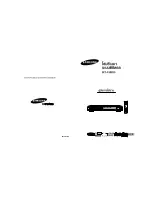
ORBINOX reserves the right to change specifications without notice.
ORBINOX CANADA, ORBINOX USA, ORBINOX SPAIN, ORBINOX UK, ORBINOX FRANCE, ORBINOX GERMANY, ORBINOX INDIA, ORBINOX CHINA
WWW.ORBINOX.COM
OBXC 05-2010
11
05-2010 Edition
Revision -
INSTALLATION, OPERATION AND MAINTENANCE MANUAL
MODEL
RB
WEIR GATES
OPERATION
Initial Operation:
Before cycling the weir gate, make sure there are no foreign deposits or materials on the seals,
guides or sealing area. Gate seals could be damaged if the area is not cleaned and coated with
a light grease. Please refer to section “Materials needed for maintenance and seal replacement”
on page 12 for detailed information about the grease type.
Manual:
Apply a light grease on the stem before initial operation after the installation. If the op-
eration is difficult due to high torque, stop operation of the gate and check stem align-
ment.
Electric Motor:
Refer to the Electric Motor Instruction Manual section before cycling the weir gate. Manu-
ally open the gate approximately 5” before the initial electric motor operation. Check the
motor rotation to assure proper direction of the slide travel according to the motor op-
eration switch (open/close).
Special attention should be taken when the gate is almost fully open or fully closed. If the
gate does not stop once the fully open or fully closed position is reached, stop immedi-
ately and adjust the limit and torque switches (Refer to motor manual).
Operation:
CAUTION! Do not force the operator to close the gate, as it may cause damage to the stem and
it does not improve the sealing system.
The RB weir gate is closed by a clockwise rotation, and opened (downwards) by a counter-
clockwise rotation of the operator.
The travel of the weir gate is limited with the use of Stop-Washers. The Stop-Washers are factory
installed, so there is no need of on-site adjustment. For self-contained frame configurations, the
slide is stopped by the yoke when it is fully closed.
The RB weir gate is designed to be self-locking, so that the slide maintains its position in open,
close or intermediate positions.



































